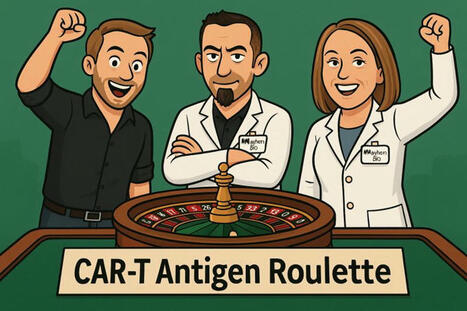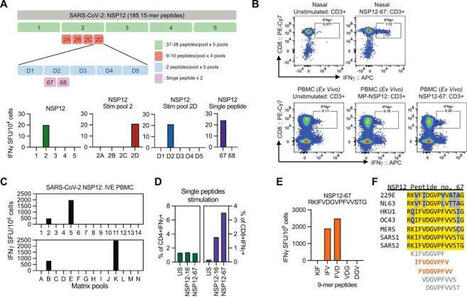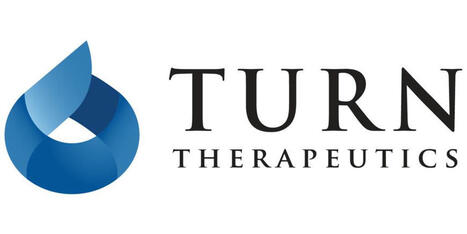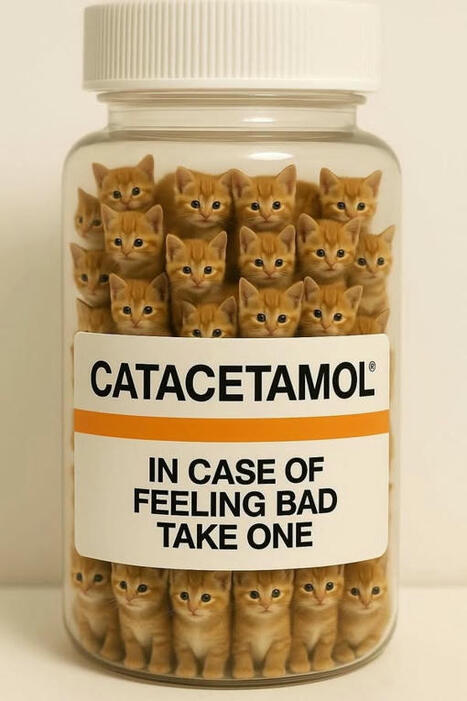 Your new post is loading...
 Your new post is loading...

|
Scooped by
Gilbert C FAURE
December 16, 2013 2:45 AM
|
Resources for DIU Immunologie et Biothérapies
DIU Immunologie et Biotherapies is a french diploma associating french universities and immunology laboratories. It is dedicated to the involvement of immunology in new biotherapies, either molecular or cellular.

|
Scooped by
Gilbert C FAURE
November 7, 1:31 PM
|
Décidément, l'imagination des inventeurs de #pseudothérapies n'a pas de limites.
Vous n'avez peut-être jamais entendu parler de la micro-immunothérapie, mais honnêtement, c'est un cas d'école.
Aucun fondement scientifique, une organisation et un marketing millimétrés pour faire croire que tout est bien démontré (c'est faux), et beaucoup, beaucoup, beaucoup de clients (je n'ose pas dire patients) plumés, en France mais aussi ailleurs en Europe.
Ce serait drôle (version immuno du foie de canard ultra-dilué) si justement ce n'étaient pas des malades qui étaient ciblés.
Bref, ne passez pas à côté de l'excellente enquête d'Antoine Beau pour L'Express sur ce business lucratif mais méconnu👇
Spoiler : grâce à son article le Conseil national de l'Ordre des médecins la Direction Générale de la Santé - DGS ou encore l'Agence Régionale de Santé (ARS) Île-de-France sont sur le coup.
Pierre de Bremond d'Ars Gascan Hugues Mathieu Molimard Mathieu Repiquet Herve Maisonneuve Association Française pour l'Information Scientifique (AFIS) Dominique Costagliola Stephanie RIST
https://lnkd.in/eARfJrzM

|
Scooped by
Gilbert C FAURE
October 26, 10:09 AM
|

|
Scooped by
Gilbert C FAURE
October 15, 4:48 AM
|
Click here to edit the content

|
Scooped by
Gilbert C FAURE
October 8, 3:34 AM
|
MHC-E is a highly conserved, non-polymorphic MHC protein that engages inhibitory and activating receptors on natural killer (NK) cells and T cells and can also present antigens to T cell receptors. NK cell responses driven by activating receptor interactions with MHC-E are implicated in controlling chronic viral infections and cancer. Immunotherapeutic targeting of interactions between MHC-E and inhibitory receptors to increase the activation of NK cells and T cells shows promise in improving antitumour immune responses. Furthermore, MHC-E-restricted CD8+ T cells elicited by cytomegalovirus-based vaccines might, for certain infections and cancers, be more effective than CD8+ T cells restricted by classical MHC class I or class II molecules. The ability of MHC-E to regulate or mediate both innate and adaptive immune responses independently of the MHC haplotype of an individual raises the possibility of new, universally effective vaccines and immunotherapies for infectious disease and cancer. Although the therapeutic exploitation of MHC-E is still in its infancy, recent advances in the understanding of MHC-E biology show enormous potential, as described in this Review. The dual nature of non-polymorphic MHC-E as a ligand for innate receptors and as an antigen-presenting protein raises the possibility of new, universally effective vaccines and immunotherapies for infectious disease and cancer that are independent of the MHC haplotype of an individual.

|
Scooped by
Gilbert C FAURE
September 18, 5:58 AM
|
Professor Richard Scolyer, co-director of the Melanoma Institute Australia, has made medical history by becoming the first person to treat his own incurable brain cancer — glioblastoma — with immunotherapy. One year after his diagnosis, he now shows no detectable signs of the disease, a breakthrough that stunned the global medical community.
Scolyer used an experimental treatment adapted from his pioneering melanoma research, combining checkpoint inhibitor immunotherapy with surgery, chemotherapy, and radiation. By essentially reprogramming his immune system to attack the tumor, he achieved results never before seen in such aggressive cancers. While his case is unique, it opens a powerful new door for future brain cancer therapies, proving that innovation and courage can push the boundaries of science.
#CancerResearch #Immunotherapy #BrainCancer #MedicalBreakthrough #RichardScolyer | 136 comments on LinkedIn

|
Scooped by
Gilbert C FAURE
September 13, 1:55 PM
|
🌐 Natural Killer Cells: The Next Frontier in Cancer Immunotherapy
For decades, cancer immunotherapy has focused on T cells, yet Natural Killer (NK) cells are emerging as equally powerful players with unique advantages.
🔬 What makes NK cells special?
They kill tumor cells without prior sensitization
They balance signals from activating (NKG2D, DNAM-1, NCRs) and inhibitory receptors (KIRs, NKG2A, TIGIT, PD-1)
They are less prone to causing cytokine release syndrome (CRS) or graft-versus-host disease (GVHD), making them safer platforms
⚠️ But tumors fight back:
Shedding of NKG2D ligands (MICA/B) via ADAM proteases creates soluble decoys that block NK activity
Immunosuppressive tumor microenvironment (Tregs, MDSCs, TAMs, TGF-β, IL-10, adenosine) dampens NK infiltration and cytotoxicity
Checkpoint pathways like TIGIT and PD-1 reduce NK function
💡 Therapeutic innovations on the horizon:
Cytokine-driven expansion (IL-15, IL-21) to boost NK persistence without fueling Tregs
CAR-NK cells – engineered for precision, combining innate and adaptive killing mechanisms, with improved safety profiles
Combination strategies with chemotherapy, radiotherapy, checkpoint blockade, and monoclonal antibodies to enhance ADCC and tumor clearance
🚀 The vision: Harnessing NK cells as an “off-the-shelf” immunotherapy — scalable, safer, and accessible. While persistence and tumor evasion remain challenges, the progress in CAR-NK engineering, checkpoint modulation, and biomarker-driven strategies could make NK-based therapies a cornerstone of next-generation oncology.
#CancerImmunotherapy #NKCells #CARNK #CellTherapy #GeneEditing #ImmunoOncology #OncologyInnovation #Biotechnology #MedicalResearch #CheckpointInhibitors #PrecisionOncology #FutureOfHealthcare #Immunotherapy #NextGenerationMedicine #MedicalInnovation

|
Scooped by
Gilbert C FAURE
September 10, 1:49 PM
|

|
Scooped by
Gilbert C FAURE
August 25, 8:04 AM
|
Interesting paper
From ClinicalTrial.gov, the main different antigens targeted by CART-cells (Liquid and solid tumors) and how many times they have been (or are currently being) evaluated in clinical trials.
Not yet for IL-1RAP!

|
Scooped by
Gilbert C FAURE
August 12, 2:04 AM
|

|
Scooped by
Gilbert C FAURE
August 5, 4:13 AM
|
Significant regulatory shift in UK
that may impact 𝗖𝗔𝗥-𝗧 delivery:
At-patient manufacturing!
With summer holidays and other industry happening, this news may have passed you by (it did me!):
As of 23rd July 2025, the MHRA (the UK regulator) legally allows flexible, innovative manufacturing approaches such as Point-of-Care and decentralised/distributed modular manufacturing for ATMPs including CAR-Ts.
𝗪𝗵𝗮𝘁’𝘀 𝘁𝗵𝗲 𝗯𝗮𝗰𝗸𝗴𝗿𝗼𝘂𝗻𝗱 𝗳𝗼𝗿 𝘁𝗵𝗶𝘀:
🔹 MHRA innovation office has been receiving enquiries around this kind of manufacturing since 2014 – but no regulatory framework was in place to allow for PoC or modular manufacturing.
🔹 As technology advances – particularly ATMPs – new manufacturing modalities are required that can take place in hospitals, clinics and even the patients own home!
💭 𝗜𝗺𝗮𝗴𝗶𝗻𝗲 𝘁𝗵𝗮𝘁, 𝗵𝗮𝘃𝗶𝗻𝗴 𝗮𝗻 𝗮𝘂𝘁𝗼𝗹𝗼𝗴𝗼𝘂𝘀 𝗖𝗔𝗥-𝗧 𝗺𝗮𝗻𝘂𝗳𝗮𝗰𝘁𝘂𝗿𝗲𝗱 𝗮𝗻𝗱 𝗱𝗲𝗹𝗶𝘃𝗲𝗿𝗲𝗱 𝘄𝗶𝘁𝗵𝗶𝗻 𝘆𝗼𝘂𝗿 𝗼𝘄𝗻 𝗵𝗼𝗺𝗲.
𝗛𝗼𝘄 𝘄𝗶𝗹𝗹 𝗶𝘁 𝘄𝗼𝗿𝗸?
🔹 The technical solutions are still in development. Notably, Spain has made some great progress on establishing localised CAR-T production centres in Barcelona and Navarra.
🔹 A centralised “Hub” control site will be responsible for the decentralised “Spoke” sites; being responsible for documentation, quality, release and inspections.
🔹 A Decentralised Manufacturing Master File (DM MF) is required to be managed by the control site with annual reporting to MHRA
🔹 GMP and Pharmacovigilance requirements are maintained and must be have appropriate management plans prior to approval
𝗜𝗻 𝘀𝘂𝗺𝗺𝗮𝗿𝘆:
This legislation marks a significant regulatory shift, accommodating disruptive innovation in medicine manufacture and delivery. MHRA has adopted a flexible, guidance-led approach supported by stakeholder feedback, with a strong emphasis on collaboration and quality assurance.
Links to the MHRA webinar and the guidance document in the comments 👇
𝗧𝗵𝗶𝘀 𝗵𝗮𝘀 𝗯𝗲𝗲𝗻 𝗵𝗮𝗶𝗹𝗲𝗱 𝗮𝘀 𝗮 𝗳𝗶𝗿𝘀𝘁 𝗮𝗺𝗼𝗻𝗴 𝗿𝗲𝗴𝘂𝗹𝗮𝘁𝗼𝗿𝘀 – but do you think this puts the UK in a strong position for systems developers?
💬 As always, let me know your thoughts in the comments below. | 26 comments on LinkedIn

|
Scooped by
Gilbert C FAURE
August 1, 3:30 AM
|
📣 We have today announced the launch of the world’s first library of immune-boosting adjuvants that can be ‘taken off the shelf’ and used to enhance new vaccines being developed against epidemic and pandemic threats.
The $2.5 million project—funded and led by CEPI—will act as a matchmaking service, helping vaccine developers select the best vaccine-adjuvant combinations to make their vaccines more potent and effective. The UK’s Medicines and Healthcare products Regulatory Agency will host the repository of 25 adjuvants shared by leading research institutes and medical companies around the world.
Vaccine-enhancing adjuvants have played a powerful role in transforming our response to deadly diseases over the past century. The ingredients are added to the majority of vaccines to enhance the immune response, creating stronger and longer lasting protection against infections than the vaccine alone.
In the case of an outbreak of a new Disease X, the adjuvant library could help quickly identify the top-performing vaccine-adjuvant pairings to contain the spread of the virus before it reaches pandemic proportions.
🔗 Discover more in the link below.

|
Scooped by
Gilbert C FAURE
July 29, 3:02 AM
|
Our new research has validated the MAPVac scale, a tool to measure how adults perceive microarray patches (MAPs) for vaccination!
MAPs are a needle-free, less painful, and easier-to-administer method for delivering vaccines.
The MAPVac scale showed strong reliability and measures attitudes toward MAP safety, ease of use, and acceptability.
Read more: https://lnkd.in/gR3c5Xnc
Thank you to my incredible team, Dr Erin Mathieu, Dr Yu Sun Bin, Dr Cristyn Davies, Josh Harmer-Ross, Professor Ramon Z. Shaban Dr Shopna Bag, and Prof Rachel Skinner.
Sydney Infectious Diseases Institute, Medicine and Health - University of Sydney, Western Sydney Local Health District
|

|
Scooped by
Gilbert C FAURE
November 8, 11:23 AM
|
The benefits are observed across patient subtypes and potentially offer the chance to avoid dialysis and implement a new standard of care.

|
Scooped by
Gilbert C FAURE
November 7, 12:37 PM
|

|
Scooped by
Gilbert C FAURE
October 15, 4:49 AM
|
The treatment landscape of non-small-cell lung cancer (NSCLC) has evolved considerably with the integration of immune-checkpoint inhibitors (ICIs) into first-line regimens. However, the majority of patients will ultimately have primary resistance or develop secondary resistance, driven by a complex interplay of intrinsic tumour biology and adaptive changes within the tumour microenvironment (TME), which can be further amplified by host-related factors such as dysbiosis and organ-specific conditions. Despite these heterogeneous origins, most mechanisms of resistance to ICIs lead to an immunosuppressive TME as the final common pathway. Consequently, current strategies designed to overcome resistance aim to restore antitumour immunity via antibody-based therapies (including bispecific antibodies, T cell engagers and antibody–drug conjugates), targeted therapies, adoptive cell therapies, therapeutic vaccines or intratumoural immunotherapies. Although substantial progress has been made in identifying potential biomarkers associated with immune resistance, the clinical relevance of many of these observations remains limited. Biomarker-driven studies using adaptive, hypothesis-generating designs might offer a promising path forward by navigating the complexity of resistance and enabling the timely evaluation of novel therapeutic concepts. In this Review, we summarize the latest advances in addressing resistance to ICIs in patients with advanced-stage NSCLC and provide insights into emerging clinical strategies and future research directions. Immune-checkpoint inhibitors have dramatically improved the outcomes in patients with advanced-stage driver-negative non-small-cell lung cancer (NSCLC), although most patients will ultimately have disease progression on these agents and the most effective treatment approach in this scenario remains uncertain. In this Review, the authors describe the outcomes in patients receiving second-line therapy for advanced-stage NSCLC and provide an overview of emerging therapies and future areas of research in this challenging clinical setting.

|
Scooped by
Gilbert C FAURE
October 8, 4:00 AM
|

|
Scooped by
Gilbert C FAURE
September 21, 8:54 AM
|
Sign in or join now to see posts like this one and more.

|
Scooped by
Gilbert C FAURE
September 15, 4:00 AM
|
Discovered more than 30 years ago, CD40L antagonists are proving to be powerful autoimmune drugs.
Learn more in a 2024 #SciencePerspective: https://scim.ag/3KfDHGc #ScienceMagArchives

|
Scooped by
Gilbert C FAURE
September 12, 11:25 AM
|
La Revue de Médecine InterneVolume 46, Issue 9, September 2025, Pages 503-508ÉditorialQuatorze façons de cibler le lymphocyte B dans le traitement du lupus érythémateux systémiqueFourteen ways to make B cells the most interesting target in systemic lupus erythematosusAuthor links open overlay...

|
Scooped by
Gilbert C FAURE
September 7, 2:32 AM
|
The age of immunotherapy for type 1 diabetes is upon us! Thrilled by the opportunity to contribute to this review led by Remi Creusot at Columbia University!#immunologymatters #endt1d https://lnkd.in/eQ_E2j5d

|
Scooped by
Gilbert C FAURE
August 12, 3:22 AM
|

|
Scooped by
Gilbert C FAURE
August 7, 4:31 AM
|
Vaccines are a polarizing topic right now—easier to say it than ignore it.
But what isn’t polarizing is this: there are people and service members in remote, underserved, and conflict-affected parts of the world still vulnerable to some of the deadliest diseases on earth because of a lack of infrastructure. Diseases like Ebola and Marburg. And protection from them still requires deep freezers and trained clinicians to prepare and administer today’s tools.
Today, we announced new stability data on our intranasal vaccine candidate—a platform built on a well-established vector designed not just with the intention to protect, but to reach.
Grateful to everyone involved so far. Still more work to do, but this moonshot may just have legs. #AMR #Access

|
Scooped by
Gilbert C FAURE
August 4, 3:48 AM
|
🐘 The first #mRNA vaccine for elephants!
Elephant endotheliotropic herpesvirus (EEHV) is the leading killer of baby Asian elephants. Professor Paul Ling at Baylor College of Medicine teamed up with Houston Zoo to develop a preventative vaccine using #mRNA technology. With support from Colossal Biosciences (the de-extinction/wooly mice company) they have evaluated the vaccine preclinically and have dosed their first elephant.
While #mRNA medicines for humans may get most of the headlines, development of applications for animal health are also accelerating.
Article: https://lnkd.in/gc_HPPB5

|
Scooped by
Gilbert C FAURE
July 29, 3:52 AM
|
Controlled human infection models in vaccine development: what’s new in 2025?

|
Scooped by
Gilbert C FAURE
July 26, 1:50 PM
|
|






 Your new post is loading...
Your new post is loading...























